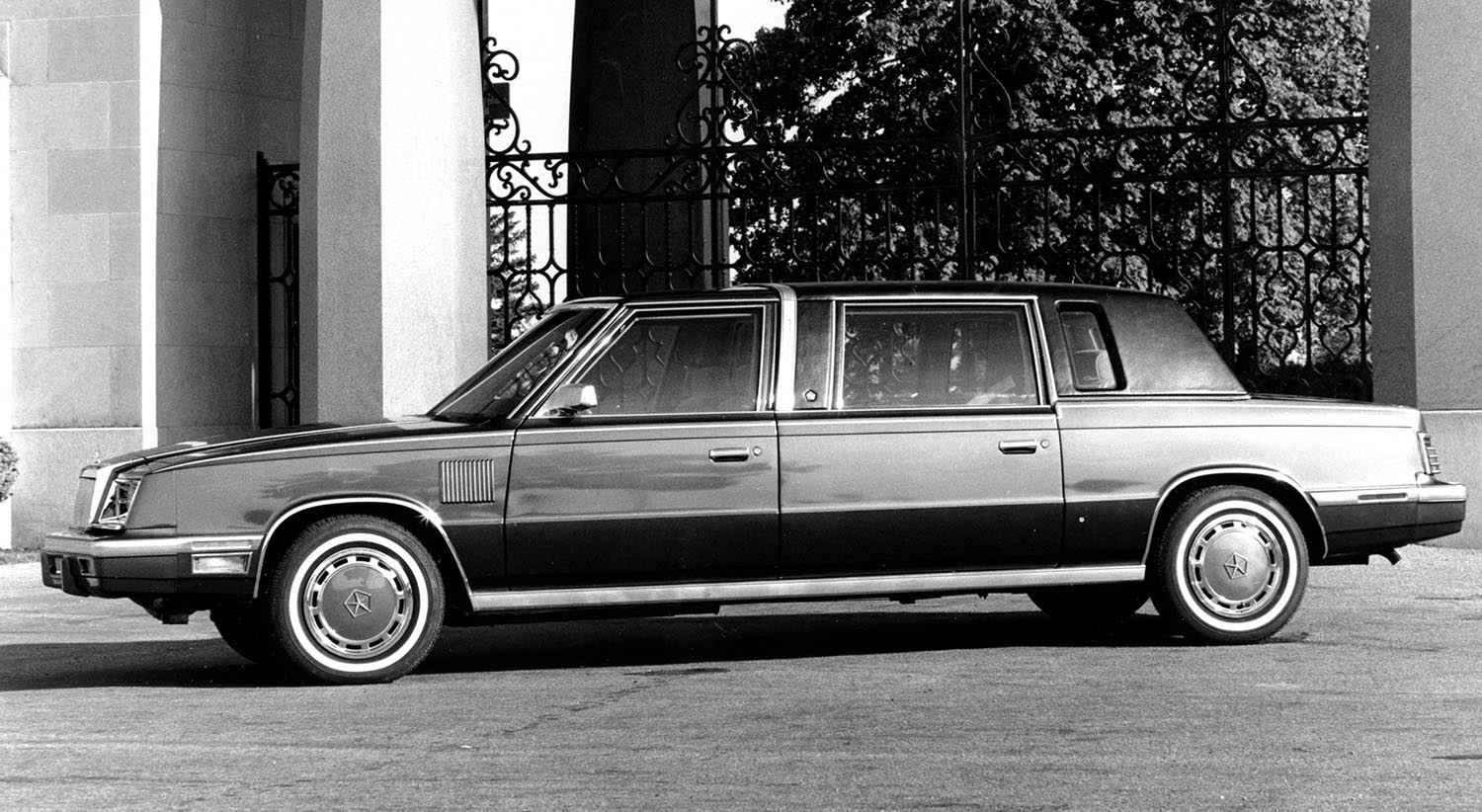
The 1986 Chrysler Limo, officially known as the Executive Limousine, stands as one of the most intriguing vehicles of its decade. It was an audacious move from a company recently saved from financial ruin by the humble K-car platform. The idea was simple: apply the K-car’s front-wheel drive (FWD) efficiency and cost-effectiveness to the realm of high-end livery. This unique approach allowed Chrysler to offer a factory-backed limousine during a period when few domestic manufacturers were doing so.
The Audacity of the Executive Program
Starting in 1983, the Chrysler Executive program was the logical extension of the popular LeBaron lineup. It was an attempt to provide a premium, chauffeur-driven vehicle that was relatively easy to maneuver. The final version for 1986 used a significantly stretched wheelbase of 131.3 inches. By contrast, the standard LeBaron sedan was a full 31 inches shorter, highlighting the massive transformation process.
From Coupe to Limousine Conversion
The limousines were not simply stretched sedans; their construction was quite complex and handled by conversion specialist ASC. The process began with a standard LeBaron two-door coupe body shell. ASC then took the front doors from a LeBaron sedan and custom-fabricated the elongated rear doors and central stretch section. This method resulted in a narrow, but notably long, four-door profile.
Interior Appointments and Passenger Space
The primary selling point of the 1986 Chrysler Limo was its dedicated luxury passenger area. The layout featured a thick partition between the driver and the rear compartment, complete with a power-sliding glass divider. Behind the front seats were two rear-facing jump seats, increasing total passenger capacity to seven. The interior was often upholstered in plush velour or optional leather, aiming for an executive feel.
Advanced Amenities for the Mid-Eighties
Passengers were treated to several high-tech amenities considered luxuries at the time. These included individual reading lamps and separate controls for the specialized rear air conditioning system. Furthermore, the glass divider and the optional rear-seat stereo system cemented its role as a dedicated executive transport. The commitment to a quiet ride was also prioritized with extra sound insulation throughout the body.
Power, Performance, and Technical Specifications
The 1986 Chrysler Limo finally received a much-needed boost in motivation for its final model year. Replacing the earlier naturally aspirated engine was Chrysler’s own potent 2.2-liter turbocharged inline-four with electronic fuel injection. This engine delivered 146 horsepower at 5,200 rpm and 170 lb-ft of torque at 3,600 rpm. This level of power was respectable for the day and a significant improvement for the heavy vehicle. The power was routed to the front wheels via a three-speed automatic transaxle. Despite its length, the FWD configuration made it surprisingly manageable in urban settings. The limousine rode on a 131.3-inch wheelbase and had an overall length of 210.7 inches. This combination of turbo power and FWD was novel in the executive class.
The Legacy of the Limited-Run Limo
Production numbers for the Executive Limousine were always small, underscoring its niche status. The 1986 model year saw the smallest run, with just 138 units built before the model was discontinued. This rarity has made the car an unusual collector’s item today. The 1986 Chrysler Limo proved the versatility of the K-car platform. It demonstrated Chrysler’s engineering capability and desire to compete in every segment, even those requiring serious modifications. Ultimately, the Executive Limousine was a brave experiment that delivered modern, efficient luxury, even if its proportions occasionally seemed a bit unusual.
Disclaimer: Content on this site is for informational purposes only. Vehicle specs, pricing, and availability may change. Always verify details with official sources before making decisions. Opinions are those of the authors.
Source: Stellantis
